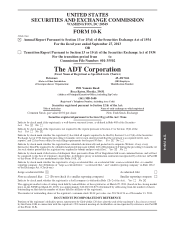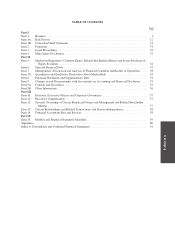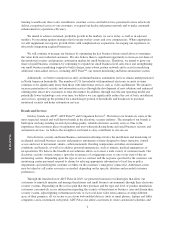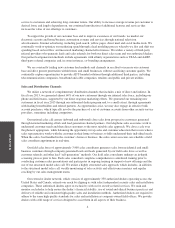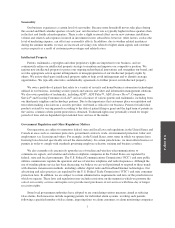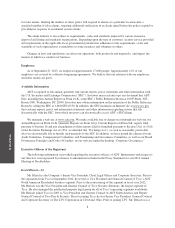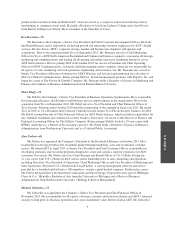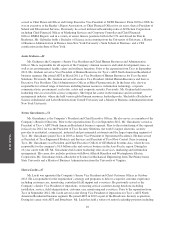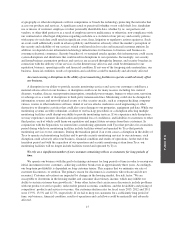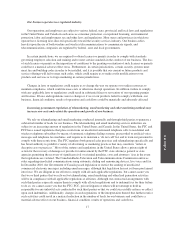ADT 2013 Annual Report Download - page 71
Download and view the complete annual report
Please find page 71 of the 2013 ADT annual report below. You can navigate through the pages in the report by either clicking on the pages listed below, or by using the keyword search tool below to find specific information within the annual report.
FORM 10-K
Seasonality
Our business experiences a certain level of seasonality. Because more household moves take place during
the second and third calendar quarters of each year, our disconnect rate is typically higher in those quarters than
in the first and fourth calendar quarters. There is also a slight seasonal effect on our new customer installation
volume and related cash expenses incurred in investment in new subscribers; however, other factors, such as the
level of marketing expense, can offset any seasonality effects. In addition, due to weather related incidences
during the summer months, we may see increased servicing costs related to higher alarm signals and customer
service requests as a result of customer power outages and related issues.
Intellectual Property
Patents, trademarks, copyrights and other proprietary rights are important to our business, and we
continuously refine our intellectual property strategy to maintain and improve our competitive position. We
register new intellectual property to protect our ongoing technological innovations and strengthen our brand, and
we take appropriate action against infringements or misappropriations of our intellectual property rights by
others. We review third-party intellectual property rights to help avoid infringement and to identify strategic
opportunities. We typically enter into confidentiality agreements to further protect our intellectual property.
We own a portfolio of patents that relate to a variety of security and home/business automation technologies
utilized in our business, including security panels and sensors and video and information management solutions.
We also own a portfolio of trademarks, including ADT®, ADT PulseTM, ADT Always There®, Companion
Service®and Creating Customers for Life®, and are a licensee of various patents and trademarks, including from
our third-party suppliers and technology partners. Due to the importance that customers place on reputation and
trust when making a decision on a security provider, our brand is critical to our business. Patents for individual
products extend for varying periods according to the date of patent filing or grant and the legal term of patents in
the various countries where patent protection is obtained. Trademark rights may potentially extend for longer
periods of time and are dependent upon national laws and use of the marks.
Government Regulation and Other Regulatory Matters
Our operations are subject to numerous federal, state and local laws and regulations in the United States and
Canada in areas such as consumer protection, government contracts, trade, environmental protection, labor and
employment, tax, licensing and others. For example, in the United States, most states in which we operate have
licensing laws directed specifically toward the alarm industry. In certain jurisdictions, we must obtain licenses or
permits in order to comply with standards governing employee selection, training and business conduct.
We also currently rely extensively upon the use of wireline and wireless telecommunications to
communicate signals, and wireline and wireless telephone companies in the United States are regulated by
federal, state and local governments. The U.S. Federal Communications Commission (“FCC”) and state public
utilities commissions regulate the operation and use of wireless telephone and radio frequencies. Although the
use of wireline phone service has been decreasing, we believe we are well positioned to respond to these trends
with alternate transmission methods, including cellular, digital radio and broadband Internet technologies. Our
advertising and sales practices are regulated by the U.S. Federal Trade Commission (“FTC”) and state consumer
protection laws. In addition, we are subject to certain administrative requirements and laws of the jurisdictions in
which we operate. These laws and regulations may include restrictions on the manner in which we promote the
sale of our security services and require us to provide most purchasers of our services with three-day or longer
rescission rights.
Some local government authorities have adopted or are considering various measures aimed at reducing
false alarms. Such measures include requiring permits for individual alarm systems, revoking such permits
following a specified number of false alarms, imposing fines on alarm customers or alarm monitoring companies
7


